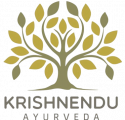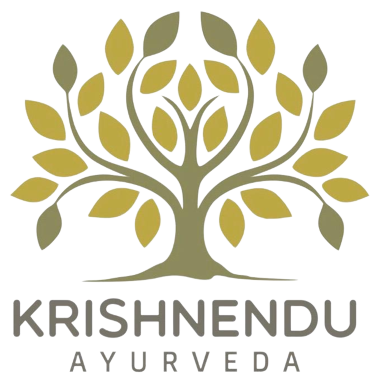Blog
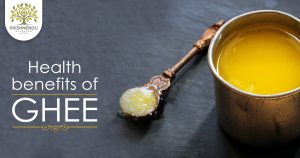
Health Benefits of Ghee
Can you believe that ghee is actually good for health? Well, most people would not! Often connected to the misconception of consuming ghee leads to health issues, the innumerable benefits of pure ghee are left disregarded. From culinary to Ayurvedic treatments, this ingredient is widely used since ancient times because of its irreplaceable properties. Breaking free from myths, here are some of the amazing health benefits offered by ghee if consumed in right proportions. Ojas (essence of life & immunity) Ghee helps in the absorption of fat-soluble vitamins and minerals that boost the immunity of the body, which is referred to as Ojas. It is free of impurities and doesn’t contain trans-fats and harmful preservatives or additives. Boosts digestion A rich source of butyric acid which is a short-chain fatty acid, ghee helps lowering inflammation and improves the digestive system. It also aids in the stimulation of stomach acid secretion which in turn helps in the proper digestion of food. Also, ghee doesn’t slows down digestion like other fats such as oil and butter. Eliminate toxins from the body Ghee facilitates the removal of toxins from the body and acts as the best remedy for constipation. Consuming 2-3 teaspoons of pure cow ghee lubricates large intestines, thereby inducing smooth bowel movements. Battle cancer cells Ghee can be considered as a superfood because of its anti-cancerous and anti-oxidant properties. It increases the body’s ability to absorb vitamins and minerals from food, thereby improving your immunity strength. This helps in battle against cancer and other heart diseases provided it is consumed in the right quantity. For weight loss Amino acid in ghee mobilizes stubborn body fat and helps in burning those unwanted flabs. It promotes weight loss only if consumed in the right proportion, else causing a reverse action. Taking 1 teaspoon of pure ghee everyday helps in achieving the best results. Good for skin Consuming ghee regularly in the right proportion adds moisture and glow to your skin. Medicated ghee, known as ghrita in Sanskrit, is consumed to cure all types of skin diseases. Ayurvedic anti-ageing treatment, Shata Dhauta Ghrita, is known to fade wrinkles, acne scars and burns.
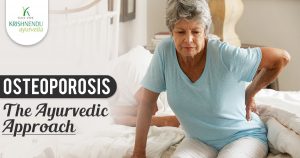



Osteoporosis – The Ayurvedic Approach
Osteoporosis is a bone disease characterised by a decrease in bone mass and density. The condition is common in women after menopause when hormonal changes influences the rate at which the new bone cells replace old cells. This results in the bones becoming porous with decrease in density. Risk factors of osteoporosis include, Advancing age Menopause Decrease in sex hormones Genetic factors History of fracture Eating disorders Sedentary lifestyle Nutrient deficiency Osteoporosis in Ayurveda According to Ayurveda, menopause marks the natural transition from a pitta dominant phase of a woman’s life to a Vata predominant phase. When Vata is in excess, it has a catabolic effect on the body tissues. Ayurveda also correlates the condition as ‘Asthi kshaya’ which is considered to be one among the several consequences that can result from Dhatu Kshaya or the degeneration of the tissue. The condition can occur due to two mechanisms – the first due to the deficiency of nutrients that nourish the bone and the second due to the blockage of channels responsible for conveying the nutrition to the bone tissues due to the accumulation of Ama. Both the causes require to be addressed for effective management of the condition. When Ama is present in the channels causing blockages and interfering with metabolism, no amount of calcium supplementation is sufficient. At first, the Ama must be removed and the metabolism of the bone tissue must be enhanced. Ayurvedic recommendations for managing the condition Ama build-up can be reduced and the digestive system can be strengthened with simple fasting or following a light diet appropriate for the individual. This will also enhance the absorption and assimilation of the nutrients necessary for healthy bones. Avoid excess red meat and animal protein as an excess of this protein can create an acidic environment in the body which utilises the calcium in the body to balance the pH of the blood. Other acid-forming foods such as alcohol, refined sugar and refined flour should also be avoided. Low fat foods are also advised against as vitamin D which is essential for bone metabolism is a fat soluble vitamin and cannot be absorbed without it. Calcium-containing foods like whole and unprocessed milk, cooked green leafy vegetables like spinach, sesame seeds, amaranth etc. are recommended. Bone nourishing foods that should be present in the diet include black grapes, radish, beetroot, sugar cane, garlic and ginger. Chew a handful of sesame seeds every morning to provide adequate natural calcium to the body. Gentle weight bearing exercises are necessary for encouraging proper bone formation. Daily dose of sunshine for synthesis of vitamin D is also advised. Ayurvedic treatments for osteoporosis Detoxification and balance of doshas with Panchakarma. Regular self abhyanga with warm cold-pressed sesame oil is recommended for reducing excess Vata and thus to bring down its catabolic activity on the bones. Pindasweda massage done with warm rice boluses that are prepared in milk and herbs and dipped in medicated oil helps remove blockages of Ama from the channels while also strengthening and toning the muscle, nerve and bone tissue. Enemas using medicated oil is advised for conditions with extreme depletion and also as part of a deeper treatment program which involves cleansing and rejuvenation.




Ayurvedic recommendations for healthy teeth and gums
Ayurveda regards common teeth disorders like cavities and receding gums as the signs of imbalance of a Kapha subtype. Here are some Ayurvedic recommendations for oral health. Chew a handful of calcium-rich white sesame seeds daily morning for strong teeth. Use small stick-like branches or twigs of trees like neem or mango to brush and cleanse the teeth. Chew the stick at one end and then rub it on your teeth. Take a mouthful of warm sesame oil and swish it from side to side for few minutes. Spit the oil out and then gently massage the gums you’re your index finger. This oil pulling and massaging technique act as a preventive against receding gums, tooth infection and cavities. Astringent herbs can be used for brushing the teeth. Mix powdered neem with an equal amount of astringent herbs like lodhra, kushta and bilva for making a tooth powder. A mixture of lodhra, kala namak, triphala and neem is also an excellent tooth powder. Mix triphala powder with finely ground roasted almond shells and use it as a dental formula. Take one gram of finely powdered rock salt and mix half a teaspoon of mustard oil in it to make a paste. Apply this paste on the gums, massage gently and rinse mouth with warm water. This strengthens the gums and kills germs, while also preventing swollen gums, tooth ache and bleeding gums. Mix turmeric powder and mustard oil to make a paste and use it before going to bed at night to prevent toothache, dental caries and bleeding gums. Drink half a glass of water mixed with two teaspoons of fresh lemon juice twice daily to strengthen both gums and teeth. Chew a clove slowly after meals to use it as a mouth freshener and also to maintain strong teeth and gums. Applying a drop of clove oil in the dental cavity provides relief from tooth ache. Brush your teeth using few drops of tea tree oil on a clean and wet toothbrush. Using a cotton swab, apply some tea tree oil on the exposed part of gums. This is beneficial to treat the sensitivity to cold and hot temperatures. Ayurvedic home remedies for common dental problems Teeth yellowing – Make toothpowder by mixing salt and finely powdered rind of lime to clean the teeth. Tooth decay – Make a paste out of turmeric, salt and mustard oil and rub it on teeth and gums. Bleeding gums – Use twig of neem, banyan, babul or holy basil to clean teeth or chew leaves of guava tree to stop bleeding. Toothache – Oils of sesame seeds, cinnamon or clove is effective for pain relief. A clove of garlic with rock salt and a pinch of pepper powder is also beneficial for relieving toothache.
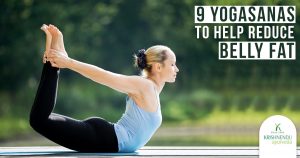



9 Yogasanas to help reduce belly fat
A hectic lifestyle combined with unhealthy eating practices and lack of exercise have made many develop a flabby tummy. The accumulation of fat around the abdomen is unhealthy and can lead to metabolic disorders. Also, of all the weight loss regimes, losing excess around the waistline is considered the toughest. Yogasanas are found to very effective in trimming down belly fat and to tone the abdomen muscles. Here are the yogasanas recommended to help reduce belly fat. Surya Namaskar – Consisting of 12 yoga poses which has a major impact in the entire body, Surya Namaskar is considered effective for stretching the body, over-all body toning and weight loss. Padahastasana – The standing forward bend compresses the abdomen and promotes burning of fat. The compression also helps tone down the tummy. Pawanamuktasana – Apart from alleviating different gastric problems, the wind relieving pose exerts pressure on the tummy and triggers burning of fat in the abdomen. Paschimottanasana – The seated forward bend stimulates the centre of the solar plexus and acts as a tummy toning pose. It also stretches the hamstrings, thighs as well as hips. Naukasana – The boat pose guarantees a flat belly with regular practice. Holding the posture for more than a minute helps strengthens and contracts the abdominal muscles, while also toning the abs and removing belly fat. Marjariasana – The forcible contraction experienced in the abdominal muscles during the cat pose aids in melting the fat and reducing the belly size. It is also beneficial for enhancing the flexibility of the spine and for correcting the posture. Bhujangasana – The cobra pose gives the abdomen a good stretch while also toning it. The pose also improves the flexibility of the middle and upper back. Dhanurasana – This yogasana, also called the bow pose is excellent for toning the tummy. Along with stretching the abdomen, back, thighs, arms and chest; it reduces belly and abdominal fat. Ustrasana – The backward stretch in the camel pose helps tone the abdominal muscles and reduces belly fat.
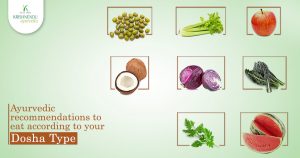



Ayurvedic recommendations to eat according to your dosha type
Ayurveda emphasizes on ‘ahara’ or proper diet as vital for promoting optimum health. And Ayurvedic texts identify six major tastes that should be included in the daily diet as sweet, sour, salty, pungent, bitter and astringent. As these six tastes also influence the doshas, it is important to know what to eat according to an individual’s dominant dosha. Here is an Ayurvedic guide to eat according to one’s dominant dosha. Vata Being a dry dosha, Vata types require warm and nourishing foods that also help calm their tendency towards anxiety and over activity. Heavy cooked foods that are served warm are the most soothing. Vata pacifying foods include sweet and salty tastes, along with warm, moist and easily digestible food choices like, Boiled or steamed starchy vegetables like broccoli, cauliflower, leafy vegetables, zucchini etc. Ripe fruits such as avocados, bananas, berries, cherries, coconut, mangoes, peaches, sour oranges, etc. Warm milk, cream, butter Soupy grains like rice and wheat Mild spices like cumin, ginger, cardamom, cinnamon, fennel, coriander, salt, cloves, mustard, black pepper Teas of camomile, fennel, ginger, lemon, liquorice etc. Pitta Pitta is a fiery dosha and needs to be cooled down. They also have better appetites and better digestion. Pitta balancing should be using sweet, bitter, astringent tastes and cool and heavy foods including, Boiled, steamed or raw vegetables which are sweet and bitter like asparagus, cabbage, radish, celery, cucumber, green beans, leafy greens, sweet potatoes, carrot, etc. Sweet fruits like bananas, cherries, mangoes, melons, pineapples, prunes, plums, etc. Moderate amounts of dairy Soupy grains like rice, wheat, barley and oats Mild and cooling spices like coriander, cardamom, cloves, turmeric, cumin, curry leaves, mint, etc. Teas of camomile, peppermint, spearmint, liquorice, red clover, etc. Kapha Kapha types tend to be sluggish and cool and needs to be stimulated and warmed up. Kapha-pacifying foods include light, dry, warm, pungent, bitter and astringent tastes like, Boiled, steamed or raw vegetables like beetroot, broccoli, cabbage, carrot, leafy green vegetables, mushrooms, okra, potatoes, sprouts, etc. Ripe fruits like apples, apricots, berries, cherries, papaya, cranberries, pears, pomegranates, grapefruit, etc. Fat-free buttermilk Grains like corn, millet, rye, oats, barley, wheat bran Strong spices like pepper, paprika, garlic, basil, cloves, allspice, fennel, mustard, turmeric, ginger, cumin, cardamom, cinnamon, coriander, black pepper, etc. Honey is recommended instead of sugar Teas of cinnamon, fenugreek, peppermint, raspberry.




5 Eye exercises to improve eyesight
Studies have found that stress is a major contributing factor for disorders pertaining to eyes. Overly strained eyes can cause vision problems, dry eyes along with anxiety and headache. Eye exercises are beneficial for relieving the strain, strengthening the eye muscles, improving visual reaction time and for enhancing cognitive performance. Here are some simple eye exercises that can be performed to relieve strain in the eyes and to improve eyesight. Palming Rub your palms against each other vigorously until they are warm and place them over your eyes to transfer the warmth onto the eyes. The eye muscles will relax with the warmth and the eyes will find relief in the darkness. Frequent and lengthy periods of palming will reduce muscular tension, while also being beneficial for sight. Blinking Sit comfortably with your eyes open and then blink 10-15 times quickly. Close your eyes, relax for few seconds and repeat 4-5 times. Frequent and effortless blinking lubricates and cleanses the eyes with tears along with relaxing the eye muscles. Sunning Sunning should be done with eyes closed. Stand in the sunlight with closed eyes and let the rays penetrate the eyelids and ease the tension. To avoid strain on the eyes, rotating the head slightly from side to side is also helpful. Shifting Rapid eye-shifting is considered beneficial for all cases of visual difficulties as loss of vision is often regarded directly proportional to loss of eye motion. Shifting is essentially moving or rotating your eyeballs from one direction to another. It makes the tiny eye muscles active by promoting blood circulation, reduces strain and improves eyesight. Figure of eight Sit comfortably in front of a blank wall and imagine a horizontally placed figure of eight on the wall. Trace a path along this figure with just your eyes and without moving your head. Repeat in clockwise and anti-clockwise directions.
